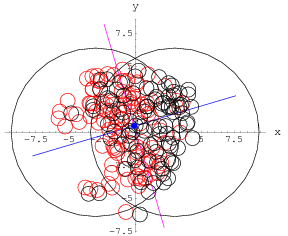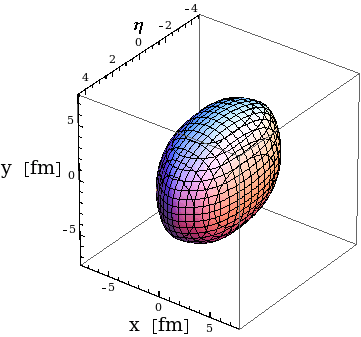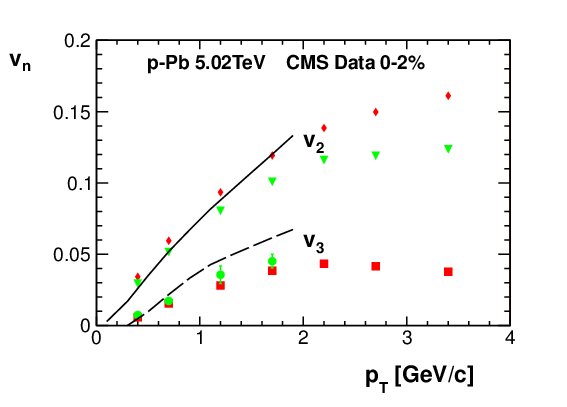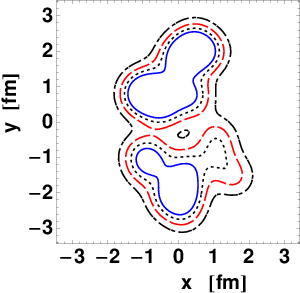Research Topics
- Relativistic hydrodynamic model for nuclear collisions
The dynamics of the dense fireball created in relativistic heavy-ion collisions at the BNL Relativistic Heavy Ion Collider and at the CERN Large Hadron Collider is modelled using relativistic hydrodynamics of a viscous fluid.



The dynamics of the system can be decomposed in three stages, the creation the initial fireball with event-by-event fluctuation, the hydrodynamic expansion and the statistical emission of particles with resonance decays and rescattering. A number of observables can be calculated, particle spectra, harmonic flow coefficients, interferometry correlations, charge balancing correlations, event plane correlations. -
Onset of collectivity in small systems
The fluid behavior observed in systems of the size of a few fms, poses the interesting experimental an theoretical question about the smallest size necessary for collectivity. If the kinetic description is adopted the limit is set by the condition that the mean free path should be much smaller than the size of the system. In the viscous hydrodynamic approach the limit is set by the relative importance of viscous corrections driven by large velocity gradients in the system. Finally, the observation of collective flow indicates that hadrons are formed locally, on scales much smaller than the size of the system.


Studies of asymmetric collisions (p-A, d-A, T-A,..) at different energies can give further insight into the mechanism of particle formation in relativistic collisions. - Self-consistent methods in quantum many body systems
Nuclear matter is a strongly interacting quantum many-body system. The calculation of its properties requires the use of advanced many body techniques. Self-consistent in medium calculations ar applied at zero and finite temperatures. Self-energy and vertex corrections can be taken into account.

Realistic calculations of the binding energy, effective mass, critical temperature or of the symmetry energy make use of realistic two and three-body nuclear interactions.
hydro events